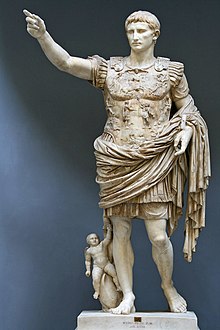 |
| Ham was greeted by the Commander of the recovery ship. |
Tuesday, 31 January 2012
January 31: The first primate in space (1961)
Monday, 30 January 2012
January 30: The Beatles' final live performance (1969)
Sunday, 29 January 2012
January 29: Karl Benz patented the first gasoline-driven automobile (1886)
 |
| Benz's Motorwagen |
Saturday, 28 January 2012
January 28: Lego patented its brick design (1958)
The design of Lego brick, which is still being used and sold, was patented by the Lego Group at 1:58pm on January 28, 1958. The Lego Group began at the workshop of Ole Kirk Christiansen in Billund, Denmark and the name Lego came from the Danish phrase leg godt meaning play well. After the design was patented, it took five years to find the right material for Lego bricks, which is ABS (acrylonitrile butadiene styrene) polymer. This was the start of the legendary construction set toy. The bricks produced then are still compatible with current bricks. Lego bricks are manufactured with great precision and sturdiness. Lego bricks are one of the most popular and enduring toys in the world over generations .
Friday, 27 January 2012
January 27: Wolfgang Amadeus Mozart was born (1756)
Wolfgang Amadeus Mozart, the musical genius, was born in Salzburg in 1756. Mozart was the most influential and most popular composer of the Classical era. He composed over 600 works including operas, symphonies, concertos, chamber music and choral music. He visited Vienna in 1781 and spent the rest of his life. He showed us what maturity and style of music can be. He was a hard worker and left numerous works. Mozart died young at his age of 35. Mozart's works were first cataloged by Ludwig von Köchel in 1862 and the catalogue has been repeatedly updated. The work is referenced by the abbreviation "K" (Köchel number).
Thursday, 26 January 2012
January 26: Lotus 1-2-3 was released (1983)
 |
| Lotus 1-2-3 for DOS |
Wednesday, 25 January 2012
January 25: The League of Nations was founded (1919)
 |
| The League of Nations |
The League of Nations was the first international organization whose mission was to maintain world peace. It was founded after the First World War as a result of Paris Peace Conference and was headquartered in Geneva. There are 42 founding members and 24 members were remained until the dissolution of the League in 1946. The United States never joined the League. When it was the largest, there were 58 member states. The League tried to disarm around the world and intervene international conflicts, but the League did not have armed forces and it became its critical limitation. The League kept failing to deal with international conflicts and it eventually became dissolved in 1946. After the Second World War, the United Nations took over its role and the principal allies became the permanent members of the United Nations Security Council. Though the League of Nations was idealistic but it had done many activities promoting human rights and peace around the world and many of these sub-organizations were absorbed by the United Nations.
Tuesday, 24 January 2012
January 24: Modigliani passed away (1920)
 |
| Self-portrait (1919) |
Monday, 23 January 2012
January 23: Men descended into the deepest point on earth (1960)
 |
| Location of Challenger Deep |
Sunday, 22 January 2012
January 22: Apple's 1984 commercial was aired (1984)
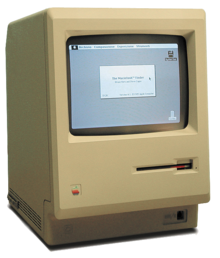 |
| Apple Macintosh |
Saturday, 21 January 2012
January 21: The first nuclear-powered submarine was launched (1954)
 |
| USS Nautilus |
Friday, 20 January 2012
January 20: Hong Kong island was occupied by the British (1841)
 |
| Hong Kong island |
Thursday, 19 January 2012
January 19: The first computer virus was released (1986)
 |
| Infected boot sector by (c)Brain |
Wednesday, 18 January 2012
January 18: The Met hosted a jazz concert for the first time (1944)
The Metropolitan Opera House in New York city hosted a jazz concert for the first time in its history. The performance was named as Esquire Jazz Concert since Esquire magazine sponsored the concert and the concert featured jazz giants of the time: Louis Armstrong, Benny Goodman, Lionel Hampton, Artie Shaw, Roy Eldridge and Jack Teagarden - simply the best in jazz at the time. A symbolic recognition of jazz as a genre of quality music.
Tuesday, 17 January 2012
January 17: UN Security Council held its first session (1946)
 |
| UN Security Council Chamber |
Monday, 16 January 2012
January 16: Beginning of the Roman Empire (27 BC)
Gaius Julius Caesar Octavianus is granted the honorific title Augustus (the revered one) by the Roman Senate and became the first emperor of the Roman Empire on January 16, 27 BC. Augustus reigned the Roman Empire until his death on August 19, AD 14 for 40 years and 215 days. Born Gaius Octavianus Thurinus, he was posthumously adopted by his great-uncle Gaius Julius Caesar via his last will and testament in 44 BC and was officially called Gaius Julius Caesar. The official title as the Emperor was Gaius Julius Caesar Augustus. After the assassination of Julius Caesar, Octavianus formed a military dictatorship, known as the Second Triumvirate, with Marcus Antonius and Marcus Aemilius Lepidus and then defeated the the two: Lepidus was driven into exile and Antonius committed suicide after the defeat at the Battle of Actium by Agrippa in 31 BC. Octavianus then restore the appearance of the Roman Republic and spent four years to determine the framework by which a formally republican state can be ruled by a sole ruler, which resulted in the Roman Empire.
Sunday, 15 January 2012
January 15: Wikipedia went online (2001)
Wikipedia, a free online encyclopedia, has been online since January 15, 2001. Wikipedia is run by the contributions of volunteers around the world and virtually anyone can contribute to the content creation, update and verification - the content creation process is very collaborative. Wikipedia has versions in multiple languages and there are currently 20 million articles - 3.8 million articles in English. Wikipedia is one of the most influential information source on the Internet. The authority of the content is often challenged due to the collaborative content creation process, however, it has been frequently referenced by the Internet users and the collaborative mass-sourcing is often regarded as more trustworthy approach than the conventional content creation. The service is supported by the non-profit Wikimedia Foundation.
Saturday, 14 January 2012
January 14: Tosca was premiered (1900)
Tosca, a three-act opera of Giacomo Puccini, was premiered at the Teatro Constanzi in Rome on January 14, 1900. The opera was based on the French dramatic play La Tosca of Victorien Sardou. The work is set in Rome threatened by invaded Napoleon's troops. Puccini adopted Wagnerian leitmotifs to identify characters and objects but did not develop or modify the motifs, which is different or innovative. Tosca is one of the most frequently performed opera in the world. Since the first recording was done by the Gramophone company conducted by Carlo Sabajno in 1919. Since then, it has been frequently recorded.
Friday, 13 January 2012
January 13: Henry Ford patented a plastic automobile (1942)
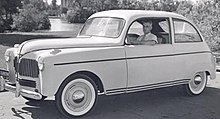 |
| The first plastic car |
Thursday, 12 January 2012
January 12: Haruki Murakami was born (1949)
 |
| Haruki Murakami |
Wednesday, 11 January 2012
January 11: The first use of insulin to treat diabetes in a human patient (1922)
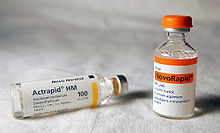 |
| Insulin vial |
Tuesday, 10 January 2012
January 10: Julius Caesar crossed the Rubicon (49 BC)
 |
| Gaius Julius Caesar |
Monday, 9 January 2012
January 9: Photograhy begins (1839)
 |
| Boulevard du Temple, Paris, 1838, by Daguerre - the first photograph of a person ever made. |
Sunday, 8 January 2012
January 8: Breakup of AT&T (1982)
 |
| The Bell System's logo |
Saturday, 7 January 2012
January 7: The Galilean moons were first observed (1610)
 |
| Io, Europa, Ganymede, and Callisto (from top to bottom) |
Friday, 6 January 2012
January 6: Wegener presented a theory of continental drift (1912)
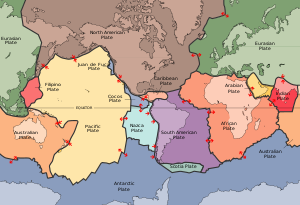 |
| The tectonic plates of the world |
Thursday, 5 January 2012
January 5: Nixon announced that NASA would develop a space shuttle program (1972)
 |
| Space Shuttle Discovery |
Wednesday, 4 January 2012
January 4: Edison electrocuted an elephant to prove his point (1903)
 |
| Topsy (The image from WIRED) |
Tuesday, 3 January 2012
January 3: The March of Dimes Foundation was founded (1938)
The March of Dimes Foundation, a non-profit organization that works to improve the health of mothers and babies by preventing birth defects and infant mortality, was founded by then-US President Franklin D. Roosevelt to fight polio in 1938. The organization was originally named as the National Foundation for Infantile Paralysis and the current name has been officially used since 2007 while the name has been used for the foundation's fundraisers since 1930s. The organization provided enormous support for the goal of eliminating polio including the approval of the Salk vaccine and the goal was significantly achieved. In 1958, the organization changed its mission to the prevention of birth defects and infant mortality and has kept working for the mission.
Monday, 2 January 2012
January 2: The Institute of Civil Engineers was founded (1818)
 |
| ICE's headquarters in London |
Sunday, 1 January 2012
January 1: The Julian calendar took effect for the first time (45 BC)
 |
| Julius Caesar |
Subscribe to:
Comments (Atom)



